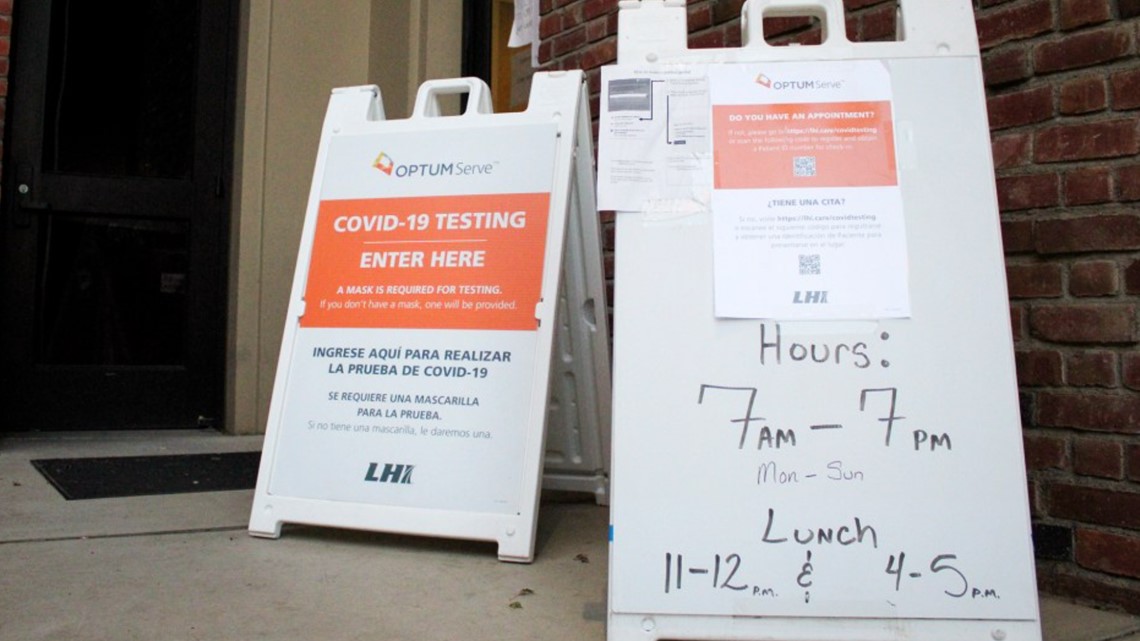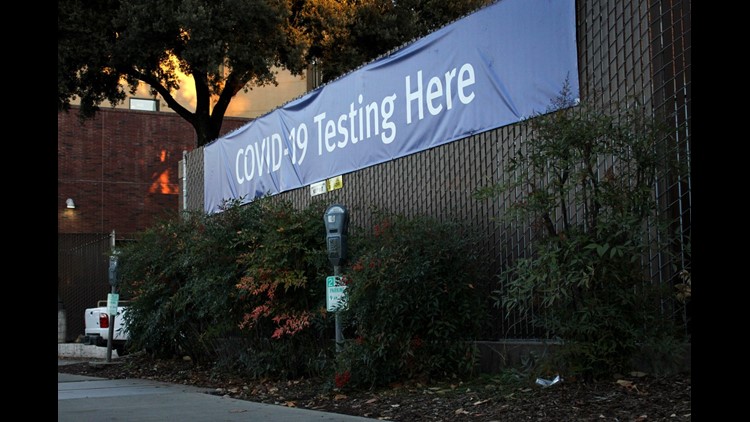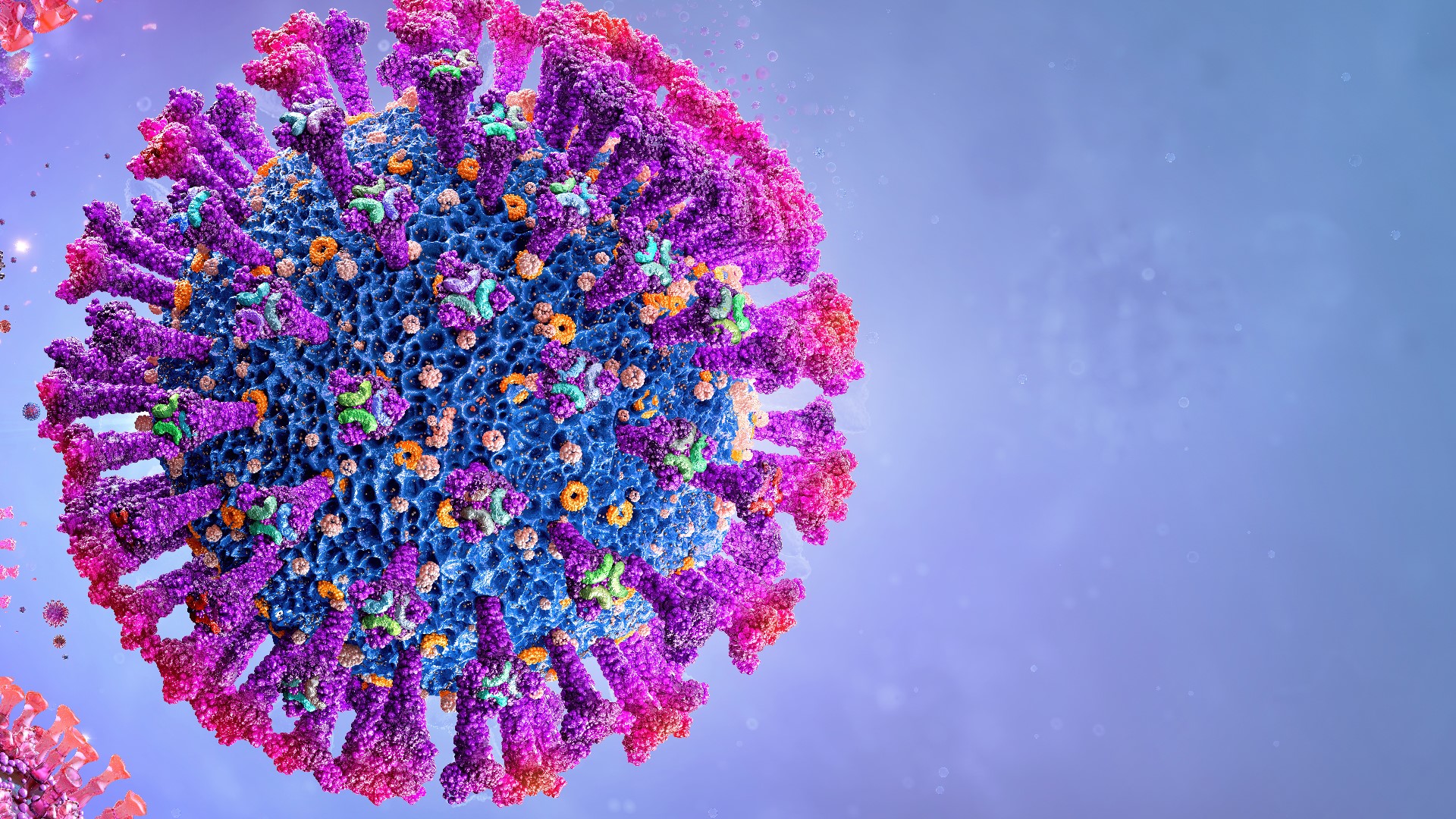CALIFORNIA, USA — This story was originally published by CalMatters
In July, with the Delta variant of the coronavirus on the rise, California State University announced that all students and employees going to campus would need to prove they were vaccinated against the virus, or apply for a religious or medical exemption, no later than Sept. 30. The move by the nation’s largest four-year public university was driven by “the overarching goal of achieving population-level immunity throughout the CSU,” Cal State Chancellor Joseph Castro wrote.
But while the vaccine mandate likely has helped avoid large outbreaks of COVID-19, it is being unevenly enforced across the system more than a month after the deadline. Some campuses barred students from in-person classes and on-campus buildings after they failed to upload proof of vaccination or request an exemption, while others allowed them to continue attending.
The lack of enforcement makes some students feel unsafe, and public health experts say it risks undermining the rule’s effectiveness. Yet others, including the Cal State Student Association and some campus administrators, say the flexibility is necessary to avoid penalizing students who come from communities where they might have less access to the vaccine.
“The policy is that if you’re accessing campus facilities, you need to be vaccinated. How they enforce that is up to the discretion of the campuses,” said Cal State Chancellor’s office spokesperson Michael Uhlenkamp.
The CSU Chancellor’s office is allowing campus presidents to take their needs and resources into account when deciding how to implement the mandate, Uhlenkamp said, but told them to do everything possible to avoid disenrolling students.
After the Chancellor’s office told the CalMatters College Journalism Network in late September that it was not tracking campus-level vaccination data, reporters requested vaccination rates for all students from Cal State’s 23 campuses. Cal State Stanislaus and Cal State Bakersfield ranked the lowest in student vaccination percentages, with about 66% of their student bodies vaccinated. Cal State Long Beach, Cal Maritime and San Diego State University have seen near complete compliance with vaccination rates at or above 95%.
The Chancellor’s office later began reviewing data on vaccination and exemption requests from only students who were enrolled in in-person classes or other campus-based programs. This data shows considerably higher vaccination rates; the overwhelming majority of in-person students were vaccinated as of Nov. 9. Across the 23 campuses, 18,695 students requested religious exemptions and 4,304 requested medical exemptions.
The way the Chancellor’s office is tracking the numbers, however, could exclude students who are enrolled online but are using campus facilities like libraries and dining halls, depending on the campus’s tracking and enforcement. And knowing that kind of information is key to preventing the virus’s spread on campus, said Dr. Kirsten Bibbins-Domingo, chair of epidemiology at the University of California San Francisco.
“You should know the rates for everyone,” she said. “Mandates are only as good as your ability to enforce them or monitor them.”
That’s especially important given the large number of Cal State exemption requests and the threat of another winter COVID surge, Bibbins-Domingo said.
Several campuses told CalMatters they are not enforcing the mandate for students in virtual classes. Cal State Bakersfield exempted 1,113 students and staff who are not accessing campus this semester, a university spokesperson said. Three campuses – Cal Poly Pomona, Cal Poly San Luis Obispo and Cal State Monterey Bay – said they approved all exemption requests for students and staff.
A more lax approach
Even among students attending in-person classes, enforcement varies by campus. At Cal State Long Beach and Cal State Los Angeles, students who did not upload their vaccine verification or apply for an exemption by the Sept. 30 deadline can still attend in-person classes and visit other buildings on campus — though they are unable to register for spring classes.
Cal State Long Beach spokesman Jeff Cook said university leaders took into account low community case numbers and a lack of evidence of classroom transmission when they decided to prioritize offering students help to meet the requirement, only penalizing them if outreach fails.
“Our large population of first-gen students deserve a caring and compassionate response given how much they’ve been impacted by the pandemic,” Octavio Villalpando, vice president for diversity, equity and inclusion and student life at Cal State LA, said in a statement.
Some vaccinated students, however, said they are troubled by the threat of breakthrough infections and the lack of enforcement. Nicolette Elia, a senior studying communication disorders at Cal State Los Angeles, began a petition last month calling for more online classes in the spring semester; as of Nov. 11, it had garnered over 3,600 signatures.
Elia said she is fully vaccinated but is nervous about the possibility of transmitting the virus between campus and the elementary school where she works.
Since her campus is not publicly sharing information about student and staff vaccination rates, she doesn’t know how safe she is from contracting COVID-19 on campus. “You’re just kind of wondering, you know, how do I know how many people are vaccinated?” she said.
There have been no outbreaks on individual campuses of case numbers large enough to change campus operations, Uhlenkamp said. Students can look up their campus’ weekly COVID-19 case numbers on a central website.
But campuses still must work to increase vaccinations, or enforce mask mandates and offer widespread testing on campuses where they don’t want to restrict access, said Bibbins-Domingo.
“The CDC has monitored college campuses throughout and the activities on a college campus — in-person classes, socializing — do actually fuel transmission,” she said. “This is an important issue for college campuses, but it’s also an important issue for communities that surround college campuses.”
RELATED:
The ideal approach to prevent COVID spread involves carefully vetting exemption requests and enforcing a mandate that actually prevents non-compliant students and faculty from coming to campus — two things her university is doing, said University of Southern California chief health officer Dr. Sarah Van Orman.
When policies are not universally applied, “there may be some levels of confusion…that can interfere with people’s interpretation of what the policies are,” said Anji Buckner-Capone, a public health and recreation professor at San Jose State University.
But public universities with fewer resources, like the Cal State system, also have to consider their students’ needs and their own capacity for enforcement, Van Orman said.
“They may have students who have a lot more barriers to being vaccinated and you have to make a decision about, do we want to exclude that person from campus or do we want to encourage them?” Van Orman said.
Even with mixed enforcement, multiple campuses’ student vaccination rates are higher than the counties in which they are located.
And though Cal State’s mandate is unevenly enforced, there’s some evidence that it’s increasing vaccination among students. San Jose State’s vaccination rate, for example, increased by 11 percentage points to 85% a little more than two weeks after the self-certification deadline.
“Any enforcement is better than none,” Van Orman said, “because you’re going to get a whole bunch of people vaccinated.”
Systemwide student advocates have pushed for more lenient enforcement of the mandate. Communities already marginalized by the education system, including Black and Latino students and homeless students, are less likely to have received the vaccine, said Cal State Student Association president Isaac Alferos.
Students who have a more difficult time accessing the vaccine should not be punished even more academically, he said. “We want to make sure that as much as we are trying to keep our students safe, that we are also not exacerbating problems that exist within the CSU as well,” Alferos said.
The stricter schools
Some Cal State campuses have opted for stricter enforcement. Humboldt State placed what the university called a “health and safety hold” on students who had not complied with the vaccine mandate by Sept. 10. When classes began in mid-September, those students could not use campus facilities including classrooms, dining halls, and the gym.
Officials were motivated by the Delta variant along with a high level of hospitalizations and community transmission in Humboldt County, said Humboldt State spokesperson Grant Scott-Goforth. The campus is also offering only 30% of classes in person.
Cal State Northridge also moved up the deadline to align with its start of in-person classes and held a vaccination fair where about 200 students got the jab.
“We wanted to make sure our students not only felt safe, but also supported on a university level,” said Linda Reid Chassiakos, director of Cal State Northridge’s student health center.
Chico State students who did not upload their vaccine verification on time were withdrawn from in-person classes and barred from registering for in-person courses in spring 2022.


Rae Helms, a vaccinated senior at Chico State, said they feel safer knowing the vaccine mandate is enforced on campus, but still wish they could see the exact numbers of how many students are vaccinated. “It’s kind of scary not knowing if everyone else is vaccinated or not,” they said.
But some students said they thought their own vaccination was enough to protect them — even at campuses with higher percentages of unvaccinated students.
“I took the initiative to be vaccinated because I wanted to help protect my family,” said Nicole Hovland, a junior psychology major at Cal State Stanislaus. “However, I don’t judge someone else because they don’t want to.”
The safety of students in the same room may vary among campuses based on a number of factors, including ventilation and social distancing, Buckner-Capone said. It is important, she said, to combat misinformation that’s contributing to vaccine hesitancy.
Over the summer, she conducted a survey of student perceptions on vaccination and returning to campus. Of the 1,760 respondents from San Jose State University, 82% of students said that they were vaccinated prior to the start of the fall semester, while 16% of students said they were not going to get vaccinated. The latter group had a variety of reasons, Buckner-Capone said.
“Students cited concerns about the side effects of the vaccine, the speed of development, vaccine safety – so again in line with a lot of the things that we’re seeing nationwide,” Buckner-Capone said.
Charlie Pereda, a senior studying environmental research at Humboldt State University, shares those concerns. He doesn’t want to get vaccinated and has not applied for an exemption.
In his family, Pereda said, “We believe in natural medicine. Like, I genuinely believe that my body would take care of it.”
Pereda is taking all online classes this semester, so he hasn’t been too affected by the hold placed on his student account that prevents him from accessing campus facilities.
Still, Pereda may want to take in-person classes next semester, so he’s planning on submitting an exemption request. If that doesn’t work, he said, he might just give in and get the vaccine.
For the record: This story has been updated with corrected student vaccination data provided by Cal State East Bay. A spokesperson for the university said she had misunderstood a reporter’s original question. She provided new numbers which she said accurately showed the vaccination rate for all students.
Huck, Mendoza and Shaikh are fellows with the CalMatters College Journalism Network, a collaboration between CalMatters and student journalists from across California. Senior fellow Omar Rashad and assistant editor Sonali Kohli contributed to this story. This story and other higher education coverage are supported by the College Futures Foundation.
This story has been updated with corrected student vaccination data provided by Cal State East Bay. A spokesperson for the university said she had misunderstood a reporter’s original question. She provided new numbers which she said accurately showed the vaccination rate for all students.



